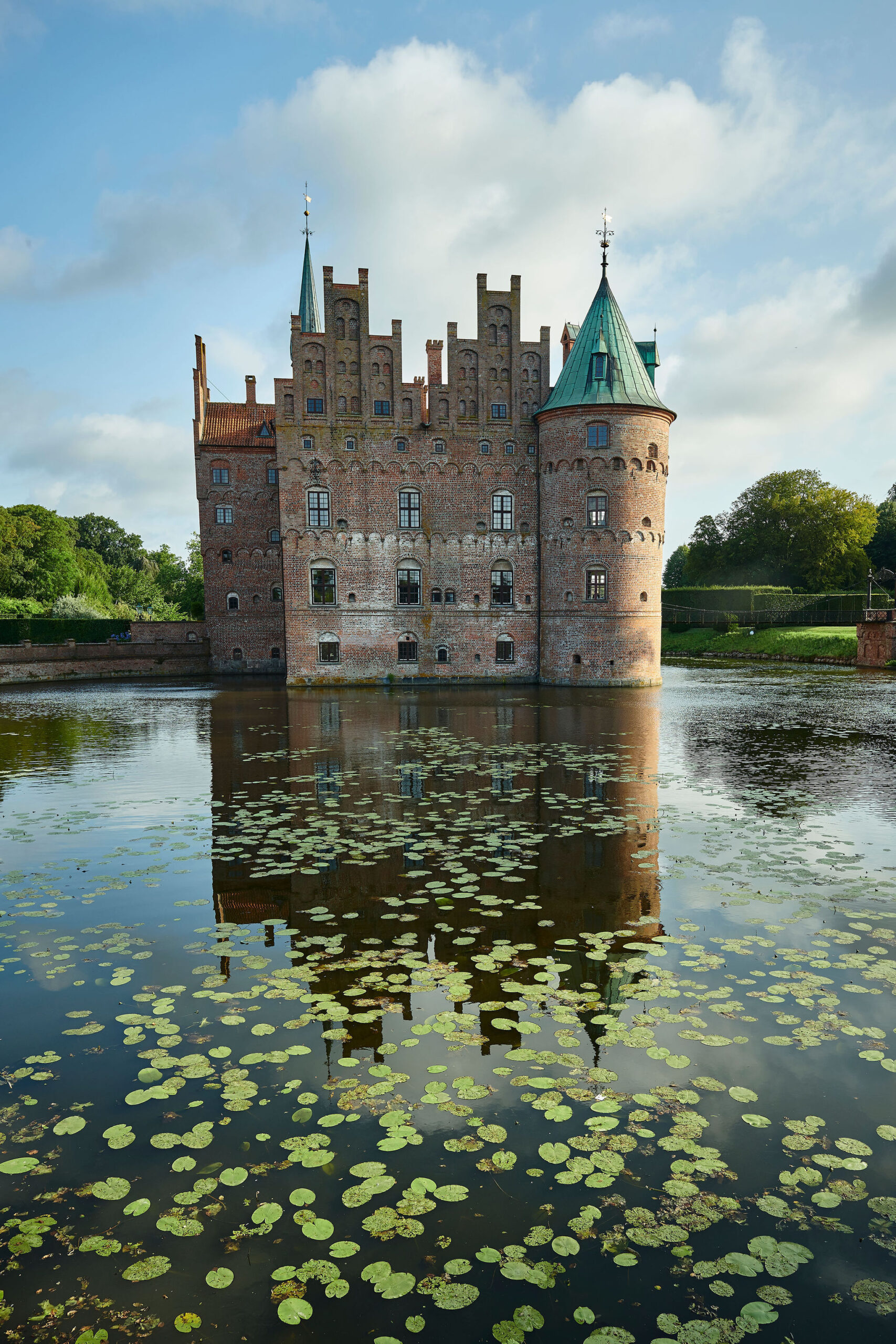Frands Brockenhuus, the man who commissioned the construction of Egeskov, certainly didn’t compromise on his project. It is thought that no lesser person than Morten Bussert, master builder to King Christian, was the architect behind the fantastic fortifications.
Many landowners at that time built their family homes as castles, making them difficult for unwelcome visitors to capture. This was due in no small part to the political unrest that swept through Denmark during the “Count’s Feud” (the Danish Civil War of 1534–36). Frands Brockenhuus was one such landowner who took the precaution of building his castle in the middle of a lake.
It took nine years to build Egeskov, and the castle was finished in 1554. As such, it spanned two distinct building style periods. If you look closely, you will sense how the architecture unites the sober-mindedness of the Late Gothic period with the neatness and order of the Renaissance style as displayed on the façade, which is decorated with ornamental fascia boards.
Peerless fortifications
Egeskov Castle is one of the best-preserved moated castles in Northern Europe. A moated castle is a castle where the water in the moat extends all the way in to the outer walls, serving as an extra line of defence against potential attackers.
Egeskov is the only preserved building in Denmark where the walls rise directly from the deep water of the lake. The castle itself is a rectangular double-building standing on foundations of boulders and sturdy oak trunks sunk into the lake bed as pilings. It is built of red brick and comprises four storeys: a deep basement, two residential storeys and a spacious loft at the top.
A thick double wall connects the two long houses. In the event of an attack, the defenders could withdraw from one building and continue fighting from the other. The double wall is so thick that it has space for both stairs and a well to ensure access to drinking water if attackers were to lay siege to the castle. In the Banqueting Hall, you can appreciate the true dimensions of the wall when you see the entrances to the different rooms from the hall. The outer wall features a series of embrasures and machicolations, designed to allow the defenders to attack their aggressors with boiling water or tar. The defenders could likewise rain arrows down on the attackers from the towers.
The castle was remodelled, adapting the architecture into its current form in 1883–84. The changes made at this time included the addition of the crenellated gable, and the establishment of a fixed connection to the surrounding land for practical reasons. The restoration was completed under the leadership of the Swedish architect Helgo Zetterwall. Egeskov Castle is a protected building today.



